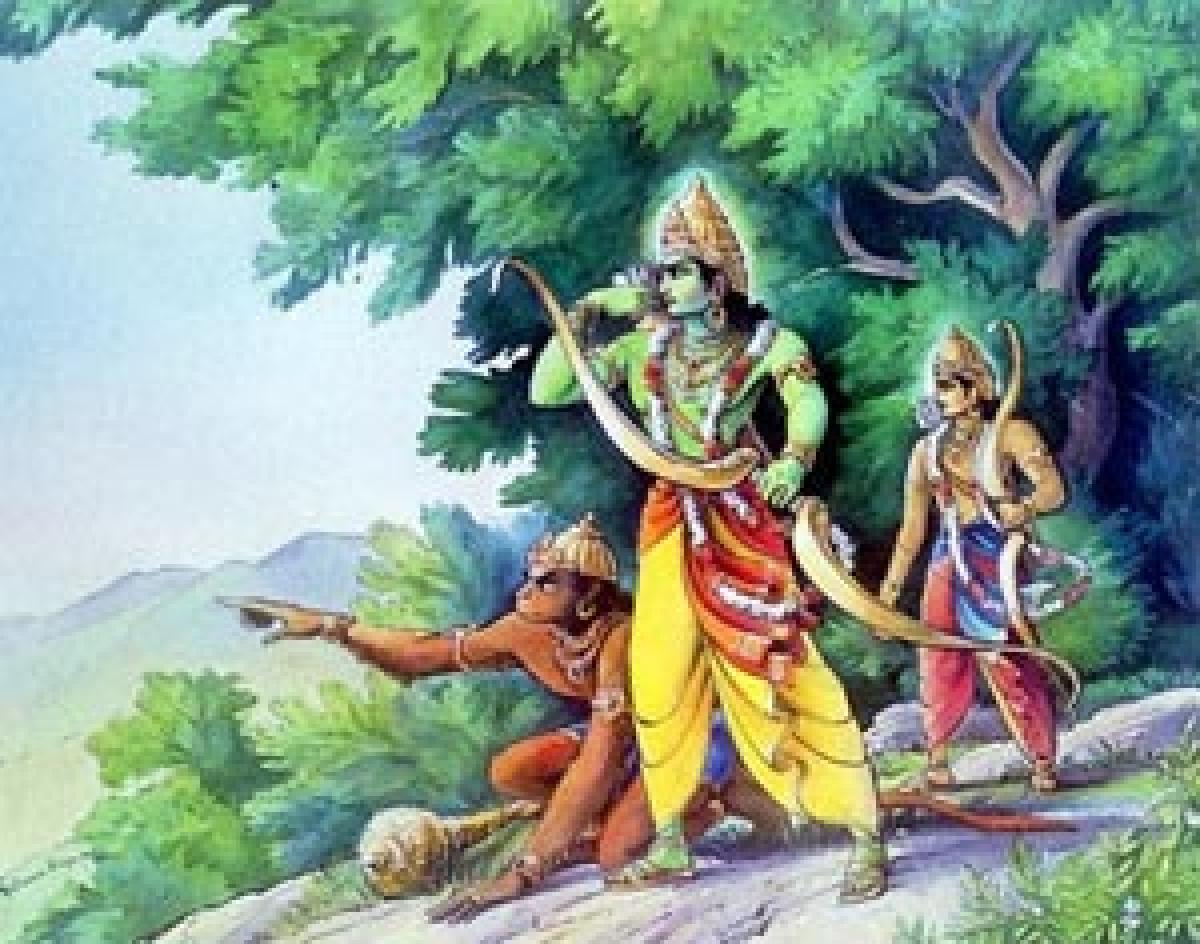Live
- Time to boost measures to prevent drowning, save children: WHO
- TDP achieves milestone with 73 lakhs membership registration, says Chandrababu
- South Korea: Main Oppn hails Yoon's impeachment motion passage as 'victory for people, democracy'
- RG Kar issue: Tension flared over parallel protests by Congress, SUCI(C) outside CBI offices
- After furore, Central Railway revokes order to raze Lord Hanuman Temple at Dadar
- Now hoteliers' body in Bengal's Alipurduar shut doors for Bangladeshi tourists
- District Collector Encourages Students to Utilize Government Facilities for a Better Future
- Per capita availability of fruits, vegetables increases in India
- FII buying reaches Rs 22,765 crore in Dec as economic growth stays resilient
- National Energy Conservation Day 2024: Date, Importance, and Easy Ways to Save Energy
Just In

Read between the lines, Sri Rama is the embodiment of Dharma of all codes of morality that hold mankind together in love and unity.
“The Ramayana is not simply the life story of Sri Rama but an exquisite piece of literature in Sanskrit verse of peerless beauty containing seven kandas, six hundred sargas, countless similes ,metaphors, allegories, hyperboles and flights of poetic imagination all of which make it a supreme piece of literature of matchless elegance for all times.’’ Rt Hon Srinivasa Sastry hailed it as one of the noblest monuments of poetic genius whether we judge it by the grandeur of the theme or by the tone of its idealism or by the appeal that it makes to devout heart, while a great scholar like K M Munshi described the Rama Rajya ‘’as a system of governance where character is the determining factor of life, where virtue takes precedence over wealth, where the spirit of service and not the exercise of power inspires those in authority, where piety is adored and pelf despised, where the meanest is equal to the highest.’’
Read between the lines, Sri Rama is the embodiment of Dharma of all codes of morality that hold mankind together in love and unity. Dasaratha represents the merely physical with the ten senses, while his three queens stand for “Satva, Rajas and Tamas.” His four sons Rama, Lakshmana , Bharatha and Shatrughna are the personification of the four goals of life the Purushardhas. The three Rakshasa chiefs such as Ravana, Kumbhakarna and Vibhishana are symbols of the Rajasic, Tamasic and Saatvic qualities respectively. Sita personifies Brahmajnana which the individual must acquire and regain after undergoing travails in the crucible of life. The bridge built across the ocean is delusion.’’
Besides being a noble classic, it is an exemplary document of enlightened socio-religious life, humane diplomacy, cultural traditions and spiritual foundations of the people of yore. Here are a few gems of thought and jewels of lofty sentiments gleaned from the sacred Ramayana. To Lakshmana who is aghast at cruel quirks of fate, he says “Of the four purushardhas enunciated for perfect life in this world , Dharma is the best. It is the offshoot of truth. Implicit obedience to father’s word generates dharma.’’
The renunciation of both Lakshmana and Bharatha shows them to be “self-liberated as defined in the Brihadaranyakopanishad.’’ Bharatha in fact follows the liturgical doctrine “This is not mine.’’ Anjaneya, the monkey-god , a symbol of steadfast loyalty proves that more than mere association with a deity like Sri Rama, it is the chanting of his sacred name that sanctifies one’s life and saves him from trials and tribulations in his life.
To the higher-ups enjoying absolute power and turning a deaf ear to the bleeding voice of the poor, Sri Rama’s comments on the duties of a ruler in the Yuddhakanda are quite instructive: ‘’When there is a man placed in high authority, it is not only for his wicked deeds that other people have to suffer, it is also for his mistakes, errors of policy or judgement that thousands of other people have got to suffer.’’
Sri Rama sets the noblest example of how rulers should be accountable to people and sacrifice their private life to present an absolute image of ethical governance. However unwarranted his action might seem in sending Sita to the hermitage of Vaalmiki, he sticks to the notion that a ruler should respect public opinion far above his personal likings and prejudices.
He comments nobly “This evil report about Sita rends my heart and causes me immense grief…For once even the least whisper is spoken against me… it is bound to spread among people like a drop of oil on a watery surface…I will not let this happen…’’ Sita is the very picture of noblest womanhood. As remarked by many a scholar, “’The Ramayana is not truth in the ivory tower that Vaalmiki holds up the mirror to.
It is truth at the secular and most liberal level as it applies to the common man in his everyday life to his society, to economics, politics, ethics and morality, to war and peace, ends and means. Today, the power-drunk politicos who indulge in unbridled nepotism, cronyism and self aggrandisement and thrust dynastic rule in politics on us in utter mockery of all democratic norms can learn lessons from Sri Rama who for the sake of dharma renounced his kingdom and courted forest life.”

© 2024 Hyderabad Media House Limited/The Hans India. All rights reserved. Powered by hocalwire.com







